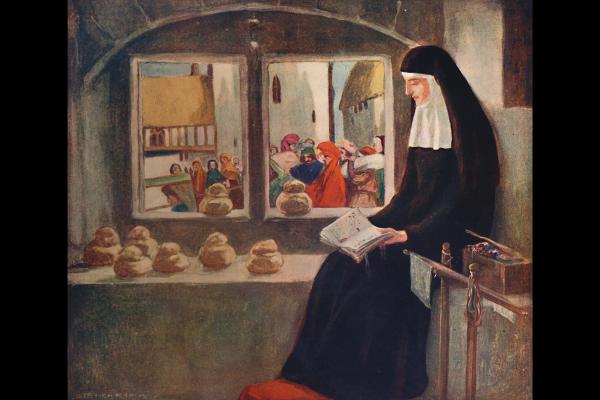JULIAN OF NORWICH, the 14th-century anchoress and mystic in England, prayed for an embodied understanding of suffering. As she wrote in Revelations of Divine Love, she desired “three graces” from God: “to relive Christ’s Passion”; “bodily sickness”; and the wounds of “contrition,” “kind compassion,” and “purposeful longing for God.” At age 30, on what she presumed to be her deathbed, Julian received a series of divine visions — equally euphoric and terrifying — that taught her about the all-encompassing nature and nearness of God’s love. In one vision, Julian saw Christ’s head bleeding profusely from the crown of thorns.
But these images did not bring her a message of despair. Julian wrote, “This is our Lord’s will: that we yearn and believe, rejoice and delight, take comfort and console ourselves as much as we can, with his help and his grace, until the time when we can see it truly for ourselves.” Through pain and contemplation, she developed a deeply embodied faith. Reading her work healed years of spiritual pain for me. In the Catholic context of my upbringing, shame led to disembodiment and antagonism toward my body. Julian, by contrast, envisioned human wholeness — in mind, body, and soul.
Read the Full Article

